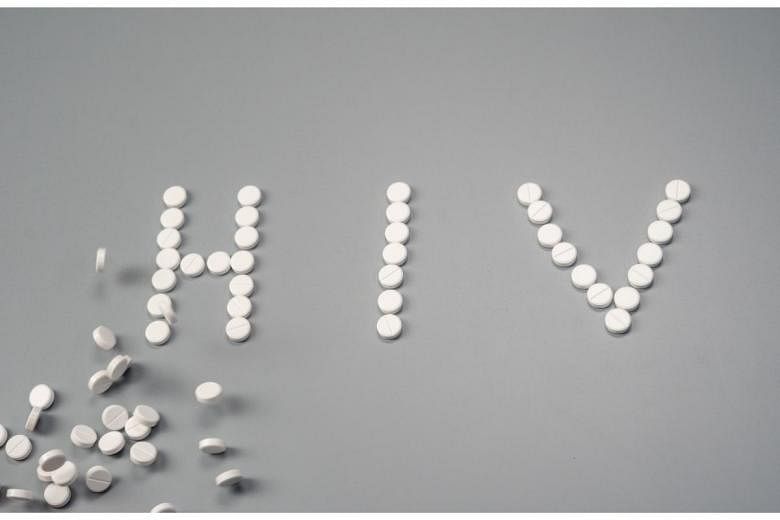Upon diagnosis of the human immunodeficiency virus (HIV), the immediate thoughts of many people living with HIV tend to revolve around a disrupted life with the chance of building a family taken away from them, and many still consider HIV infection to be a "death sentence".
However, this does not always have to be the case.
With advances in medicine to help people living with HIV manage their conditions, it is possible to suppress the HIV viral load in the body using antiretroviral (ARV) drugs, which can eventually stop the transmission of the virus to others.
"Studies have shown that when the virus is undetectable - traditionally defined as less than 40 copies per millilitre of blood - there is no risk of transmission to anyone, even via sexual intercourse," said Dr Leong Hoe Nam, an infectious diseases expert at Mount Elizabeth Novena Hospital.
"In other words, people living with HIV can still have children in a normal way."
First discovered in the early 1980s, HIV is a virus that damages the immune system and exists in bodily fluids such as semen, vaginal fluid, blood and breast milk. It is often spread via unprotected sex or by sharing needles, syringes or other drug injection equipment according to the U.S. Centres for Disease Control and Prevention (CDC).
HIV can also be transmitted from an untreated mother to her baby during pregnancy and delivery.
Statistics from WHO has shown that HIV and Aids (the late stage of HIV), has claimed almost 33 million lives around the world in the past four decades since its discovery. While there is still no effective cure for it, advances in antiretroviral therapy (ART) in recent years mean that fewer people are dying compared to the peak of the HIV epidemic in the 1980s.
Based on WHO statistics, HIV-related deaths fell by 51 per cent, with 15.3 million lives saved due to ART between 2000 and 2019.
Living with HIV should no longer be perceived as a death sentence
While ARVs have been a game changer in saving lives and reducing the spread of HIV, it is not a one-size-fits-all solution.
A study conducted among people living with HIV in Asia conducted this year by ViiV Healthcare found 67 per cent of respondents were worried about the long-term side effects of ARTs, with 46 per cent reporting side effects with their current ART regimens.
"Side effects such as nerve issues, fat changes (lipodystrophy), high cholesterol and osteoporosis were a problem with older drugs used 10 to 15 years ago," said Dr Leong. "Newer drugs that are currently used in Singapore are much better. Any side effects are very mild."
According to U.S. CDC, while not everyone experiences side effects, this may differ among individuals. Common side effects that people living with HIV can still experience include nausea and vomiting, fatigue, headaches, diarrhoea and dizziness.
In the study done by ViiV Healthcare, six out of 10 respondents reported that they believe that there is room for improvement in their overall HIV care, while 65 per cent were open to exploring other forms of treatment, such as ART regimens with fewer medicines consumed.
However, despite having concerns about their treatment, only half of the respondents in the same study felt comfortable having a discussion with their doctors about the impact of ARTs on their lives.
The hesitation to speak to their doctors about their treatments may be due to misinformation in the past, said Dr Leong.
"There is too much wrong information carried down from the past," he said. "And many people will be worried about the side effects of anything new."
Taking the step to optimise their medicine regimens from their initial ones to suit specific concerns and considerations can make a huge difference for people living with HIV in reducing the side effects that they may face in their daily lives. With close monitoring of their treatment, better treatment options can be customised for them.
Dr Ling Li Min, an infectious diseases physician at Mount Elizabeth Novena Hospital, recalls the experiences of two patients that she treated for HIV.
Both patients were reacting negatively to the side effects of their initial treatments. One had a severely abnormal liver function after being on treatment for a while, and the other had a severe reaction - including fever, rash and abnormal blood test results - within weeks of starting treatment.
Both individuals agreed to have further tests and to be monitored, said Dr Ling. It took their medical teams between four to six weeks to come up with new treatment regimens which were customised to themselves and what they could tolerate.
With that new lease of life, one of these individuals underwent an inspiring transformation, recalls Dr Ling.
"He changed his lifestyle, left his job, sought meaning and purpose in life and went to the jungles in Malaysia to help the disadvantaged," she said. "Once this person's condition stabilised and (he) had good immune recovery, he changed his life completely."
Dr Ling added that he was one of the most "determined, courageous, positive and resilient people" she has ever known.
Besides the options to optimise their treatment, people living with HIV in Singapore were also given a boost in their ability to manage their conditions.
In September, the Ministry of Health (MOH) added 16 ARVs to its Standard Drug List (SDL) of subsidised medications and Medication Assistance Fund, which allows patients who cannot afford these drugs to draw from it to help pay for them.
Subsidised patients who purchase subsidised drugs will be able to receive 50 to 75 per cent worth of subsidies.
This improves the accessibility and affordability of ARVs to many people living with HIV in Singapore. Previously, those living with HIV could receive help from the Medication Assistance Fund only on a case-by-case basis.
According to Dr Leong, the extended list of ARVs includes many drugs highly recommended by doctors.
MOH numbers have shown that by the end of 2019, there were 8,618 cases of HIV among Singapore residents, of whom 2,097 had passed away.
Medical advances and increased access to drugs now mean that HIV is no longer the death sentence it was once perceived to be. However, many people living with HIV still face the fear of being viewed with "disdain", said Dr Ling.
If this social stigma can be tackled and combined with the availability of ARVs, HIV can be eradicated, she added.
"ARVs can suppress HIV viral loads to being undetectable, meaning not transmissible. Combined with individuals at risk coming forward for regular testing and more public education to reduce social stigma, these efforts can help to end HIV/Aids collectively."
The Joint United Nations Programme on HIV/Aids (UNAIDS) has set a goal for the world to end the Aids epidemic by 2030.
This Tuesday (Dec 1) marks World Aids Day. People living with HIV can and should be leading full lives. It is important that they receive care and support within their immediate circle - their family, friends and community - as well as the wider public to helping them tackle HIV. This can encourage them to take the step towards the goal to ensure they seek and get the best possible care and treatment for themselves to carry on their daily lives with minimal side effects and achieving a good quality of life.
"(People living with HIV) have every right to love and be loved, have jobs, to lead, to have children, to make an impact on society," said Dr Ling. "By ensuring good access to treatment, supportive and holistic care, these individuals are empowered to stop HIV infection."
Brought to you by


